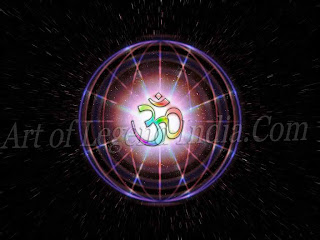 Hinduism, as we have seen, has
a wealth of scriptures to guide both the initiate and the scholar. We now come
to some of the fundamental tenets of the religion, as given in these
scriptures.
Hinduism, as we have seen, has
a wealth of scriptures to guide both the initiate and the scholar. We now come
to some of the fundamental tenets of the religion, as given in these
scriptures.  Hinduism, as we have seen, has
a wealth of scriptures to guide both the initiate and the scholar. We now come
to some of the fundamental tenets of the religion, as given in these
scriptures.
Hinduism, as we have seen, has
a wealth of scriptures to guide both the initiate and the scholar. We now come
to some of the fundamental tenets of the religion, as given in these
scriptures.
The first question the Hindu is
asked is whether he believes in God. Verily Hindus believe in the One God, Who,
in His highest form is known as the Brahman, the Absolute, or the Universal
Soul. He is imminent within and about us, as also transcendent, outside
material existence, transcending Time and Space. He is Nirguna, or without
shape and form, and without beginning or end.
To explain that God exists and
is reality, we have, in the Chandogya Upanishad, the illuminating story of the
young Svetaketu's discussions on the Brahman with his father, Uddalaka Aruni,
when he wanted to know where there was proof that God, who is not visible,
really exists.
The father asked his son to get
a fruit from the great nyagrodha (banyan) tree and to break it open. Taking one
of the tiny seeds inside the fruit, he asked him to split it further, but young
Svetaketu found nothing inside the seed. Yet, the father explained to him,
inside the seed, not visible to the eye, is something out of which grows the
mighty banyan tree. That same great power pervades the entire universe. It may
not be seen, but It exists.
Uddalaka further asked his son
to mix salt in water. After it had dissolved, he asked Svetaketu to taste the
different parts of the water in the bowl and to separate the salt from the
water. The son found all parts of the water equally salty and pointed out that
the salt could not be separated from the water.
Uddalaka explained to Svetaketu
that just as the salt pervades every drop of water in the cup, the Universal
Spirit pervades all life.
Uddalaka also pointed out to
his son that, just as the salt cannot be separated from the water, when finally
all beings merge with the Brahman, they lose their individual entities, as the
separate waters of rivers lose their separate forms when they flow into the
ocean. Individuals may die but the Universal Spirit is deathless and life
itself therefore does not die.
The Upanishads therefore teach
us that the whole Universe is a manifestation of the Brahman. Life in all its
forms is evolved from this single source of Energy, the Universal Spirit, which
pervades all life and all things animate and inanimate. Since It is Nirguna or
formless, the Brahman is not considered either male or female and is referred
to by the impersonal pronoun, Tat (meaning That).
The Brahman is also described
as "Satchitananda". Sat is that which exists (Being), Chit is pure
intelligence (Consciousness), and Ananda is pure joy (Bliss).
All meditation begins with the
words, "Om Tat Sat", to remind us of the only Ultimate Reality, the
Brahman, which is the highest intelligence and is supreme bliss.
The mystic syllable,
"OM" (pronounced "Ohm"), is known as the Pranava and is the
symbol of the Brahman. This sacred word encompasses in itself the whole
universe, the past, present and future and goes beyond the periphery of Time
itself. Being the symbol of the Brahman or the Universal Soul, it is the very
essence of all that is sacred in Hindu thought. It is used at the beginning of
meditation, at the beginning and end of prayer, during the practice of Yoga, in
fact at all times when the thought of the Brahman pervades one's being.
Writer
– Shakunthala Jagannathan
Subscribe to:
Post Comments (Atom)












0 Response to "The Tenets and Beliefs of Hinduism"
Post a Comment